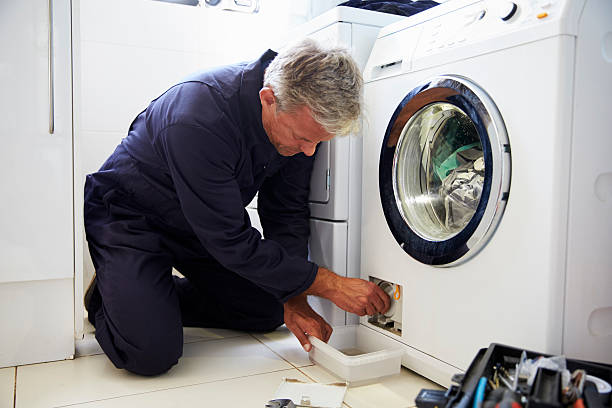Keep Your Dryer Running Smoothly for a Warm Winter

The convenience and ubiquity of the modern tumble dryer has quite literally transformed the visual landscape of our cities and towns — visions of colourful clotheslines stretching from windowsill to windowsill, drying racks (or clothes horses) erected on porches, and backyards swaying with everything from hanging bed sheets to sundry unmentionables are now largely a thing of the past. The electric dyer has saved us scads of time, made drying clothes completely independent of inclement weather, and made our garments toasty warm for those cold days for nearly 80 years — and newer models are beginning to reduce the dryer’s notorious carbon footprint with moisture sensors and less energy-wasting mechanics.
Despite the convenience and ease of these home appliances, they still need to be treated with care in order to operate effectively, safely, and for many years of quality service. If your dryer is on the fritz, we can always assess the problem, attend to any malfunctioning parts, and suggest a proper course of action, but until that time, you want to use your dryer appropriately to keep service calls to a minimum and to save you money and aggravation.
Always read your owner’s manual when purchasing a new dryer, and follow its guidelines — we find that this step is ignored by a surprising number of people. Once you know your dryer inside and out, keep up proper maintenance by only drying appropriate garments — in other words, never try to dry garments with foam, rubber, plastic, or glass components, and always check your pockets for flammable materials like matches and lighters. Never attempt to dry anything soaked in lighter fluid, gasoline, or other flammable liquids, or you’ll risk a vapour-induced explosion. You can keep your home safe by installing a fire detector near the dryer and never operating the appliance while you’re asleep or away, just in case of error.
Don’t overload your dryer; you need an adequate amount of space for air to flow between garments. On the other hand, if you’re only going to be drying a handful of pieces, make sure you include different-sized items to allow a proper tumble.
Arguably the most important thing you can do for your dryer is clean out its lint tray and filter. Do this before every load, and wipe them down occasionally to clear off any residue from dryer sheets. You should also clear out the outside vent and make sure no clogs develop, and keep the short dryer vent hose from becoming kinked or bent. Sweep, wipe, or vacuum up lint around and behind the dryer, too. In general, too much lint means your dryer has to work harder, for longer, to finish its job. Excess lint can make for overlong drying times, overheated clothing, remaining dampness, and mechanical failure, so don’t overlook this easy step.
We can help you inspect gas lines for gas-powered dryers, clear up squeaks and annoying noises related to drum rollers, idler pulleys and belts, test your voltage, repair door switches, themostats, thermal resisters and fuses, main control boards, timers, and everything else that might keep your appliance from operating normally or fully drying your clothes. Our fixed service charges, friendly and knowledgeable staff, commitment to match quotes from competitors, and interest in building a meaningful relationship with you makes us the sensible choice for getting your dryer back on line.
It’s hard to air-dry your garments in today’s busy world, and nobody needs damp clothing in the winter. Give us a call whatever your problem might be, and let’s get things clean and dry and back in working order.